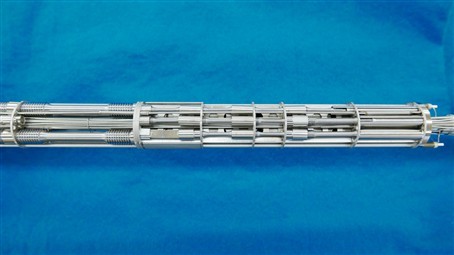Special metal to be used in ITER gets tested


F4E has signed a contract with Studsvik, a Swedish company, to perform tests on the steel that will be used in the first wall of ITER’s Test Blanket Modules (TBMs). The biggest fusion machine will operate with a hot gas, whose temperature will be ten times the one in the core of the sun, reaching 150 million° C. A wall will cover the TBMs to protect them from these extreme temperatures. Therefore, the need for materials able to cope with high heat fluxes and irradiation is pressing. Europe, responsible for nearly half of the components of the machine, has opted for a low-activation steel, known as EUROFER97. It will be tested in ITER and depending on its performance it will be used in future fusion machines. What is so special about this metal? It can take the heat and is sufficiently resistant to fusion’s radiation environment.
The tests have now entered a new phase and with the help of NRG, Netherlands, a subcontractor of Studsvik, the teams will study the performance of the steel after being irradiated. Basically, the materials will be put to similar conditions as in the future fusion reactor. The High Flux Reactor, Petten, is the home of these tests, where four rigs will be irradiated. The work which started in late 2016 is expected to be completed by early 2018. After each irradiation phase, the metal will be transported to Studsvik to examine its impact, the brittleness of the materials, the microscopic changes that take place and the extent to which the strength characteristics are affected. On the basis of these tests we should know whether the materials will be suitable for future fusion devices.
ITER, the world’s most ambitious fusion machine consists of approximately one million main components. The TBMs are part of them and these tests will feed into their development. One can describe them as steel cases inside which tritium will be produced through interaction with the neutron generated by the fusion reaction. Six different concepts have been designed among the ITER parties, two of them in Europe. Ultimately, the most effective concept will be used in future. As tests proceed and more data are being collected, scientists around the world will be getting closer to the materials that will be used to generate this sustainable, unlimited and safer energy-fusion.